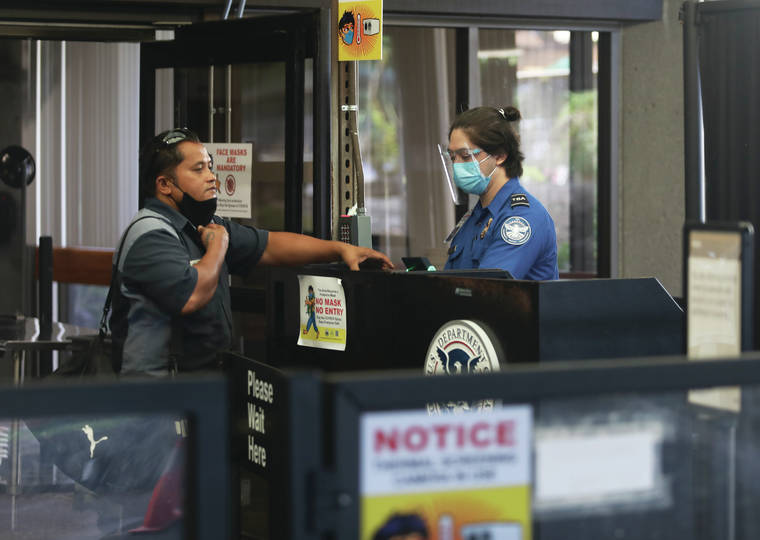The state’s economic recovery is going better than expected but could be on the verge of another crisis, according to presentations during a Monday meeting of the House COVID-19 committee.
The House Select Committee on COVID-19 Economic and Financial Preparedness touched on a wide range of COVID-related subjects during the meeting, with people optimistic about the immediate economic recovery of the state while worrying that Hawaii could backslide into another COVID spike.
Carl Bonham, executive director of the University of Hawaii’s Economic Research Organization, said the state’s economic recovery is going faster than initial predictions expected.
While UHERO initially forecast that economic activity would increase by about 10% in the latter half of October — directly after the state’s Safe Travels Hawaii program allowed more visitors to travel to the state unimpeded — Bonham said the state instead had an increase of about 18% in October, rising to more than 20% in early November.
While about 36,000 jobs were lost between July and September, about the time when a spike in COVID cases struck the state, Bonham said based on the state’s current economic trajectory, he hopes the state can recover many of those jobs by early 2021.
Similarly, Eric Takahata, director of Hawaii Tourism Japan’s Oahu office, said he expects a gradual ramp-up of visitors to the state throughout 2021.
This year, Takahata said, the number of visitors from Japan to Hawaii dropped by 82% from 2019 — by the end of August, less than 300,000 Japanese passengers had arrived in the state, nearly all of whom did so in the first months of the year.
However, since then, Hawaiian Airlines has resumed flights between Honolulu and Japan airports, and Japan Air and All Nippon Airways have a handful of flights to Oahu scheduled between now and the end of the year.
Despite this, however, Takahata said there currently are no immediate plans to resume flights from Japan to Kailua-Kona. While Takahata said polling among Japan residents indicates people are interested in traveling directly to the Big Island, the resumption of such flights depends on the airlines themselves.
Takahata did not mention the possibility of loosened restrictions for Hawaii residents traveling to Japan.
But while the tone of the House committee was broadly optimistic, Bonham warned that, based on current COVID trends, the state could be due for a COVID spike in early 2021 that will dwarf what it’s already seen.
“Without a mask mandate, and 95% mask compliance, we’re heading for a spike in January that will exceed the number of cases we had last summer,” Bonham said.
Bonham went on to say that Oahu has about two weeks to reverse its current course before it returns to its highest level of restriction. Under Honolulu’s tiered recovery system, restrictions are added or subtracted if the average daily case count is consistently higher or lower than certain thresholds throughout a multi-week period.
House Speaker Scott Saiki reiterated his support for a statewide mask mandate, which would establish a universal policy toward mask-wearing rather than leave such policies to individual counties.
Saiki said Gov. David Ige should amend his emergency proclamation to include language about how masks are required statewide, and that counties are responsible for mask enforcement.
Saiki also said the state Legislature could introduce bills that would establish fines for mask violations — Ige’s proclamation makes it a misdemeanor offense, which, as a criminal penalty, means the only way of contesting the citation is through a jury trial — but added that would require a special legislative session to create a law that will likely become irrelevant when the pandemic eventually ends.
Email Michael Brestovansky at mbrestovansky@hawaiitribune-herald.com.






